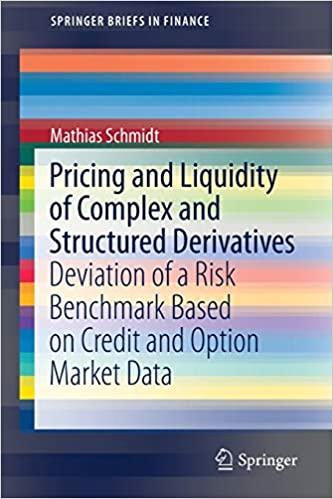Question 3 Read attachment 5. (Note that this question is about the market in which home-owners (borrowers) obtain funds from banks (lenders). In this market, home-owners can be regarded as consumers; and banks as suppliers. The price in the market is the rate of interest for loans made by banks to home-owners; and quantity traded is the amount of funds borrowed/loaned.) Suppose that the demand for funds from borrowers from banks for home loans is inversely related to the rate of interest. The total cost for a bank to supply funds to borrowers is fa + +FC; where is the RBA cash rate, FC is the fixed cost of operating and q is the total quantity of funds loaned. Hence MC = f + q and ATC = 9 + 1 + PC. The Reserve Bank of Australia decreases the cash rate from Thigh to low In answering these questions, you do not need to make numeric/algebraic calculations, you just need to explain your answer in words. Using graphs/diagrams may help. The reason that the specific MC and ATC functions have been given is to show that they will shift up and down by the entire amount of a change to the RBA cash rate, f. (a) (1 mark) Suppose that the banking market is perfectly competitive, with a long-run supply curve that is constant with price rate of interest). Would the entire decrease in cash rate be passed onto borrowers in the long-run? (Note: By passed on, what is meant is whether the equilibrium rate of interest will decrease by the full amount of the decrease in the cash rate from Thigh to low) (b) (1 mark) Suppose that the banking market is monopolistically competitive. Would the entire decrease in cash rate be passed onto borrowers in the long-run? (c) (1 mark) How are consumer surplus and banks' profits affected in the long-run by the decrease in the RBA cash rate when: (i) the banking market is perfectly competitive; and (ii) the banking market is monopolistically competitive. Attachment 5 Warning to banks: pass on rate cut Stephen Bartholomeusz, The Age; June 5 2019, p.1 Reserve Bank of Australia governor Philip Lowe has warned big banks that failing to pass on all its official rate cut risked undermining the economy, as he paved the way for more cuts in a bid to slash Australia's jobless rate. Just hours after ANZ Bank announced it would pass through only 0.18 of the RBA's 0.25 percentage point reduction in the cash rate to a record low of 1.25 per cent, Dr Lowe said there were no excuses for those banks that did not lower their standard mortgage rate by the full amount Treasurer Frydenberg, who spoke to the heads of each major bank before the RBA meet- ing, said ANZ had let down its customers and warned other banks not to follow suit. Question 3 Read attachment 5. (Note that this question is about the market in which home-owners (borrowers) obtain funds from banks (lenders). In this market, home-owners can be regarded as consumers; and banks as suppliers. The price in the market is the rate of interest for loans made by banks to home-owners; and quantity traded is the amount of funds borrowed/loaned.) Suppose that the demand for funds from borrowers from banks for home loans is inversely related to the rate of interest. The total cost for a bank to supply funds to borrowers is fa + +FC; where is the RBA cash rate, FC is the fixed cost of operating and q is the total quantity of funds loaned. Hence MC = f + q and ATC = 9 + 1 + PC. The Reserve Bank of Australia decreases the cash rate from Thigh to low In answering these questions, you do not need to make numeric/algebraic calculations, you just need to explain your answer in words. Using graphs/diagrams may help. The reason that the specific MC and ATC functions have been given is to show that they will shift up and down by the entire amount of a change to the RBA cash rate, f. (a) (1 mark) Suppose that the banking market is perfectly competitive, with a long-run supply curve that is constant with price rate of interest). Would the entire decrease in cash rate be passed onto borrowers in the long-run? (Note: By passed on, what is meant is whether the equilibrium rate of interest will decrease by the full amount of the decrease in the cash rate from Thigh to low) (b) (1 mark) Suppose that the banking market is monopolistically competitive. Would the entire decrease in cash rate be passed onto borrowers in the long-run? (c) (1 mark) How are consumer surplus and banks' profits affected in the long-run by the decrease in the RBA cash rate when: (i) the banking market is perfectly competitive; and (ii) the banking market is monopolistically competitive. Attachment 5 Warning to banks: pass on rate cut Stephen Bartholomeusz, The Age; June 5 2019, p.1 Reserve Bank of Australia governor Philip Lowe has warned big banks that failing to pass on all its official rate cut risked undermining the economy, as he paved the way for more cuts in a bid to slash Australia's jobless rate. Just hours after ANZ Bank announced it would pass through only 0.18 of the RBA's 0.25 percentage point reduction in the cash rate to a record low of 1.25 per cent, Dr Lowe said there were no excuses for those banks that did not lower their standard mortgage rate by the full amount Treasurer Frydenberg, who spoke to the heads of each major bank before the RBA meet- ing, said ANZ had let down its customers and warned other banks not to follow suit









